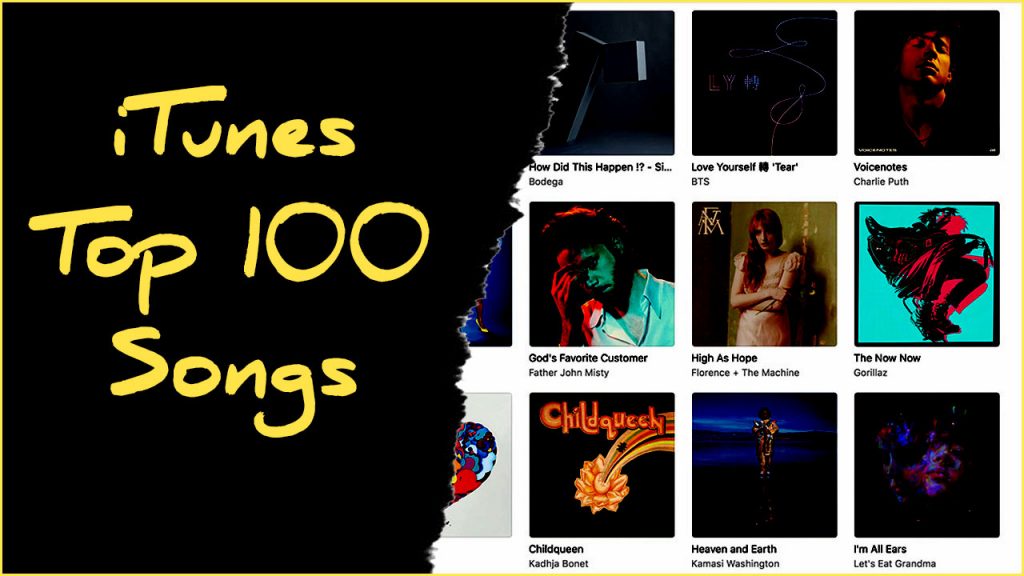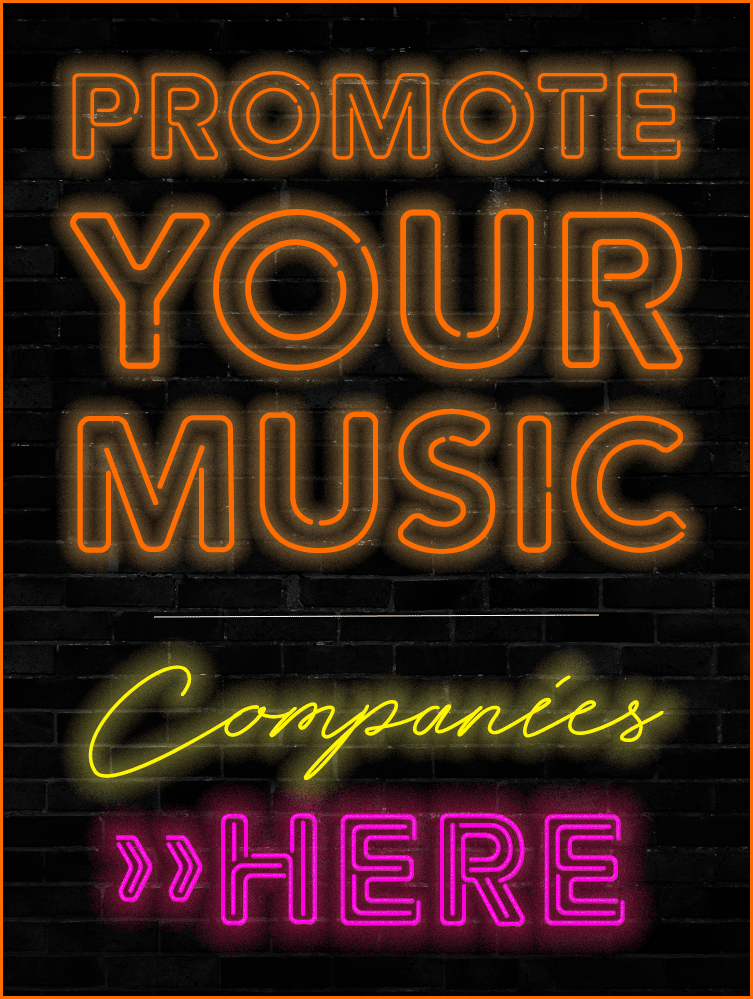Simply put, music is everything! It is this ever-evolving art form that is now—more than ever—propelled by technology. There is a platform for everyone, with more and more great artists submitting their work for the world to hear from wherever in the world, both upcoming and established. There is no shortage of options when it comes to access to music, with plenty of online options for streaming. In spite of this, millions of music fans and connoisseurs still want individual copies of their favorite songs. There’s just something special about owning your favorite track or album. That’s why—despite the popularity of Spotify, the establishment of Tidal and other music streaming services—Apple’s iTunes Top 100 music charts is still a favorite amongst music fans.
iTunes Top 100 Songs
With so many artists releasing new music, the iTunes top 100 songs change frequently as shown below.
iTunes Top 100 Music Charts Change Daily
The beauty of the various iTunes music charts is that they change daily depending on the users. There is plenty of new music that is released every day. A song riding high at the top of the iTunes Top 100 chart on a Sunday may drop all the way to number 5 by the start of the next week. While this may be seen as negative from an artist’s perspective, it is bliss for the fans who get to discover new hits daily.
Since iTunes is such an established platform, a new artist breaking into the Top 100 chart is a strong accomplishment. It is a great way to gain a following and a fanbase and to boost your music career. The more people love your song, the higher you go up the charts, and the greater the exposure you get. It is a snowball effect that continues until you get to the highest position you possibly can; the song’s peak position.
A Brief History of iTunes
iTunes is the Swiss Army Knife of media consumption. It is a media player, media library, has internet radio and device management. Developed by Apple in 2003, iTunes can be used to buy, download, play, and organize media (songs, video, podcasts, you name it).
iTunes’ music library section has he tracks, whose attributes (artist name, song title, etc) can be edited by the user. iTunes allows users to buy music from the iTunes store. In the first week back in 2003, users bought more than a million songs, and that number has only skyrocketed over the years. As of 2017, there were 43 million songs on iTunes, with billions of songs sold. In 2015, Apple introduced its streaming music streaming service called Apple Music.
How the iTunes Top 100 Charts Works
In most cases, iTunes bases the top charts off of the total number of downloads. While many may assume it’s based on the number of times a song is played, iTunes isn’t a streaming service, so entire songs cannot be played until after a user purchases the song or album.
When compared to Billboard, the iTunes top 100 charting system is different. Every music platform, streaming or otherwise, will have its method of ranking songs either based on streams, downloads, or a combination of both. As such, the number one song on Tidal may be different from the one on Spotify. The number one album on iTunes may be different from the top album on Billboard.
However, no matter what method is used, the song has to be either streamed a lot or downloaded (bought) a lot. Even for established artists, any new song they drop is not automatically added to the chart. Users on iTunes will have to download your song very many times to get you very high up the top 100 list. This is why the iTunes top 100 chart is full of hits, which technically speaking, might also mean songs that have done very well commercially.
For Billboard, physical sales, airplay, streaming, and the information obtained from Soundscan determines the ranking of the Top 100 charts. Platforms like iTunes report the sales figures to Soundscan. However, for a song to be ranked on Billboard, it must be registered with Soundscan. Being an ‘official’ chart, the process undertaken to determine the ranking is complicated.
For those interested in Apple’s streaming service, you’ll want to look into Apple Music instead of iTunes. Much like other streaming services, Apple Music also offers up various top charts, including top USA singles, top K-Pop singles, Top New Songs, and even Top 100 Albums.
Difference Between iTunes and Apple Music
There is some confusion about what the difference between these two services from Apple is. These four differences that may help you easily differentiate between the two:
- iTunes is media software while Apple Music is a music streaming service
- iTunes is free to use and lets you buy individual songs and albums while Apple Music lets you pay for a monthly subscription
- iTunes lets you manage media content and other devices and Apple Music does not
- iTunes can play video and photos while Apple Music is purely a music-based service
How to Get on the iTunes Top 100 Charts
iTunes is a well-established music platform and remains unmatched when it comes to music purchases and downloads. This remains true, even though the availability of music from streaming platforms has shifted how many people listen to music. Initially only available within Apple’s ecosystem (iPhones, Macs, and iPads), iTunes is also available for other platforms. This means that a song on the iTunes Top 100 chart will potentially be bought by millions of people. It is not that easy though, with the music business being run by big labels. The question now becomes, how can an independent or indie label artist break into this coveted list?
Thankfully, technology gives even the smallest artist a chance to get to the biggest stage. With a good song and a few strategic moves and choices, the chances increase significantly as highlighted below:
- Social Media Marketing
Having a buzz about your song has never been more important. Social media platforms are quite literally the tools ‘at hand’. There are two ways to look at this. First, the more people know about your amazing song, the more people are going to buy it. Even if you have the next Gangnam Style, no one will download it if no one knows about it. Social media campaigns, promos, live streams, and the like are a fantastic way to connect with current and potential fans and create hype around the song.
Secondly, iTunes is a business. The more people that use the platform, the better. An unknown artist with a good song might not be featured on strategic sections where more people are likely to discover you, their next favorite artist. Having some buzz around you might get you featured more prominently in say, the discover section or in a new artist alert category. Either way, using your online presence can get you into the Top 100.
- Know the Competition
Dropping the same time as a bigger, much more popular artist in the same genre as yourself is not that wise. Even if your song is ten times better, everyone’s attention will be on the competition’s song. Think strategically about the best time to release your song to get its maximum attention and interest.
- Fire Music Video
Visual media is almost a staple accompaniment to a good song. Platforms like YouTube can help boost the number of downloads on iTunes, getting you into the iTunes Top 100 chart. A good video will get millions of views and move up in YouTube’s algorithm, getting even more views. If it is trending, the link directing them to download your song on iTunes will have millions of hits. See the pattern? Good. Videos are not the cheapest investments, but nowadays a good smartphone camera and decent editing skills go a long way. Get creative.
- High-Quality Content
Even if you have the voice rivaling a choir of angels, quality is everything. A professionally-produced track goes a long way with listeners. Even with everything else done right, poor quality can be your downfall musically. Make every release iTunes-worthy.
- Sale-Boost Tools
You must have heard of pre-orders. Whether due to loyalty or FOMO, offering a pre-order with some perks can greatly boost sales and downloads and can vastly improve your position on the charts. Pre-orders are accounted for in release-day sales. This will boost both the sales and buzz around the song, giving you a great advantage.
- Plan the Roll-out
You now have your professionally-produced single ready for release, what’s next? Having a plan for dropping the song is important. With a release date in mind, you may opt to drop teasers and promo material on social media for the weeks leading up to the date, getting the fans hyped. You can have a specific debut time, with a live stream and promo codes for the first few people. iTunes selects featured artists weeks in advance and therefore you may want to set aside enough time to promote the song and garner more pre-order sales before the big day.
- Consider Dropping an LP instead of a Single
As far as preferences go, getting featured on iTunes is more likely when releasing an album and not a single. You can use a single to build hype and gain traction before dropping your well-curated body of work giving even your new fans more than just one song to listen to. Multi-faceted artists can be featured on numerous charts on iTunes, further expanding the fanbase.
Not only will these tips get you onto the iTunes top 100 charts, but on their streaming service as well.
From iTunes to Apple Music
After nearly two decades, Apple is waving goodbye to iTunes and saying hello to Apple Music, kind of.
At its annual developer conference, WWDC 2019, Apple announced that the latest version of macOS (Catalina) would ship with Apple Music, Apple Podcasts, and Apple TV apps instead of iTunes. This meant that the Mac variant of iTunes would be split into the three apps instead of all being consolidated into one. While one reason for this was that iTunes was becoming sluggish because of all the functionality it had, it is also clear that Apple is trying to push users towards its subscription services like Apple Music (streaming) and Apple TV.
iTunes for Windows is unaffected, and the iTunes Music Store is not going anywhere either. Long-time users will, however, have a bit of a learning curve when switching from iTunes to either of the three apps. Some will miss having everything in one place. Despite the change, Apple has assured iTunes users that their music libraries will remain intact. The only difference will be opening the Music app instead of iTunes.
For device management, some are seeing the change as a very good thing all things considered. Mac users can now use MacOS Finder instead of having to fire up iTunes every other time.
From another perspective, one may argue that the new apps might affect and maybe change how iTunes users obtain and listen to their music. This may push more people onto Apple’s streaming service. Either way, the iTunes top 100 music chart will always have great music.
Apple Music has charts as well, driven by streaming numbers but still populated by the most popular songs. It is still a great platform; both for the fan looking for that great new song and the artist looking to put out his/her artistry into the world and make a living off of it. Technology has come a long way, and Apple has always been at the forefront, enhancing the way music is enjoyed by everyone.
iTunes Top 100 Charts US Final Remarks
As a musician, it’s vital to know not only what’s trending at the moment but to be able to monitor these trends as they come and go. What makes the iTunes top 100 songs chart so great is that it is not comprised of songs from any one genre or location. Instead, it features songs from every genre and every artist including pop artists, rock artists, edm artists and all artists from across the globe.
That said, make sure to keep an eye on the iTunes top 100 songs list. After all, you never know whom you may discover.
Related Posts
- The Voice iTunes Top 100
While the fans make the show, the show has to first exist. The execution is…
- New Songs and Today's Top Hits - Playlists
New Songs Which new songs are shaking up the airwaves? What are today’s top hits?…
- Best Spotify Playlists for Any Mood
What are the Best Spotify Playlists? Music is everywhere, and with playlists all over the…
- Top / Best EDM Artists
Who are the Top / Best EDM Artists? Electronic Dance Music (EDM) is a music…
- Atlantic Records Artists – Top 10 Legendary and Current Acts
With the right conditions, a music label can help conjure a timeless sound and propel…





